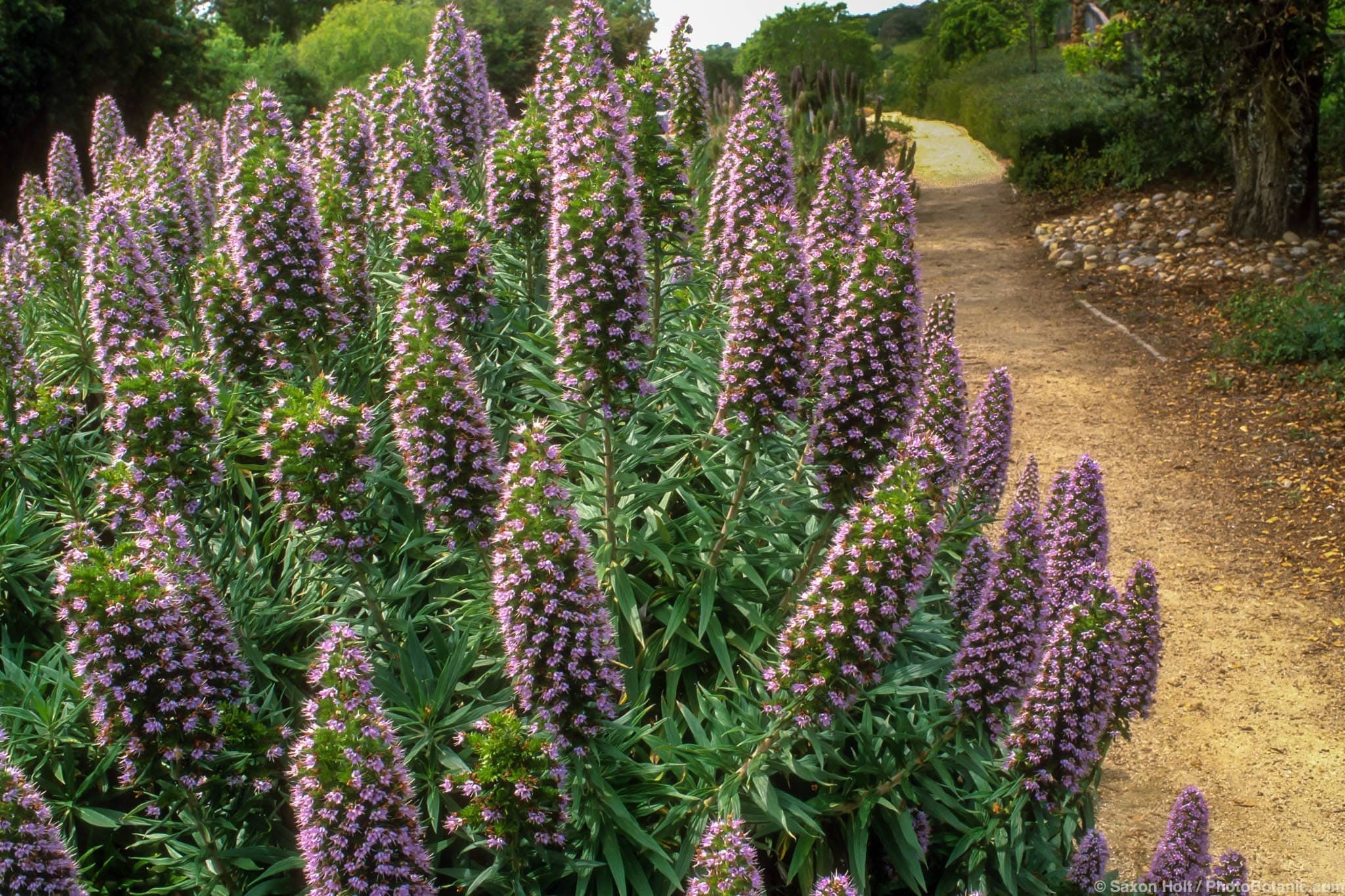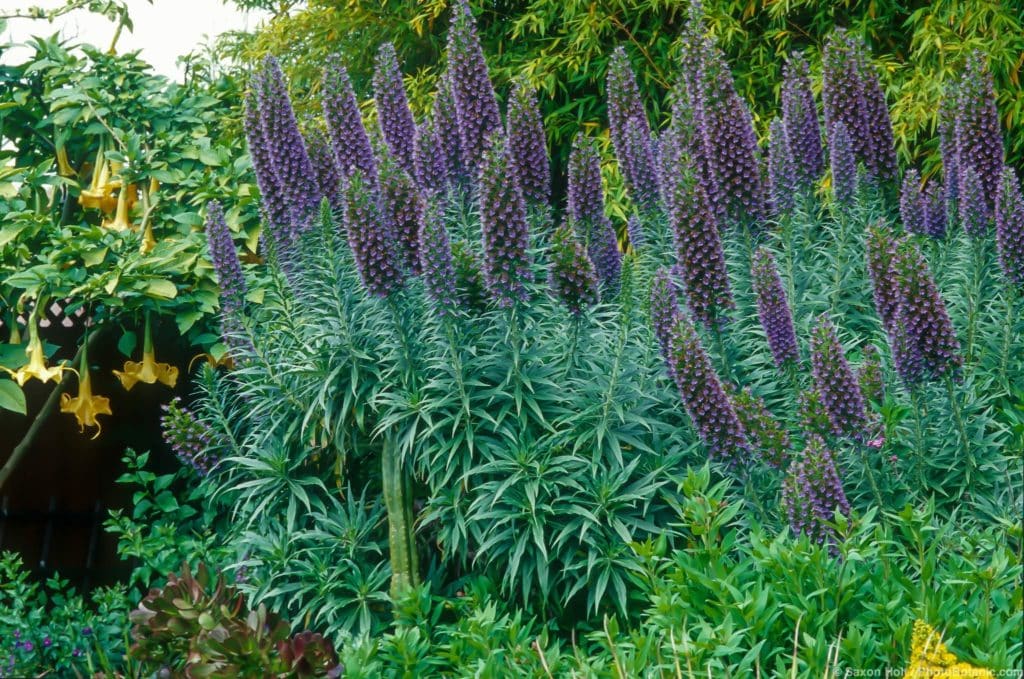
Echium candicans (aka. E. fastuosum) (Pride of Madeira) flowering along dirt path in summer-dry waterwise garden
At its most luxuriant in mid to late spring is Echium candicans. Hailing from Madeira and the Canary Islands, this magnificent plant has spread into wildlands and untended landscapes in some coastal California areas and is sometimes mistaken for a native.
Big, bold, and fast-growing, this ultimately massive shrub can overwhelm a small urban backyard at maturity, but if you’ve got the space and appreciate vegetative drama, this is a plant worth considering.
E. candicans grows quickly to six or eight feet tall and wide, and it seeds about in astonishing abundance. Expect to pull many tiny seedlings every year if you don’t cut off the flower stalks before seeds mature. Don’t plant it anywhere near natural open space. Even if you are able to contain this plant, gardeners that come after you may not know how or be willing to do it.
Seedlings are easy to pull, but you have to keep after them. Young plants can appear thirty feet from the parent plant. That’s a good thing if you like surprises, not so good if you don’t.

Echium candicans (aka. E. fastuosum) (Pride of Madeira) with spikelike purple flowers in summer-dry garden
E. candicans requires no supplemental water near the coast, though leaves may droop piteously in hot inland summers. The tall spikes of iridescent clear blue to violet-blue flowers will knock your socks off in spring and early summer. The leaves are soft, gray-green, and lightly hairy. They are large and lush on young plants, smaller on plants that have passed their prime.
Echium will not accept hard pruning, but the perfectly rounded shape of young plants can be maintained by annual light tip pruning. If you let them go too long without tip pruning plants will become lanky and wildly irregular in age.
Echium is attractive to bees, hummingbirds, and butterflies. It prefers full sun and good drainage and blends nicely with California natives.
E. candicans is said to be short-lived (six to eight years), but I have marvelous old woody specimens that planted themselves more than twice that long ago.
The leaves and flowers of older plants are not as impressive as those of their offspring, but the gnarled, intricately twisted branches are so decorative that I leave them as testament to the resilience and beauty of old plants that have a great story to tell.





Leave A Comment